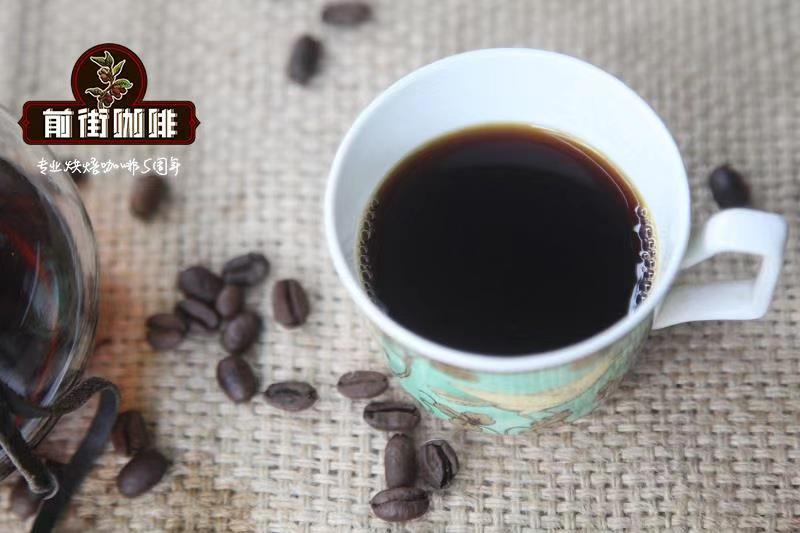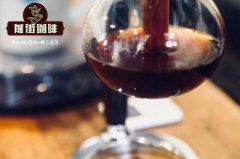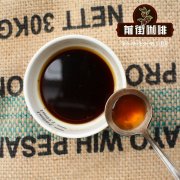Does Blue Mountain Coffee taste sour? what's so special about the taste characteristics of Blue Mountain Coffee?

Professional coffee knowledge exchange more coffee bean information please follow the coffee workshop (Wechat official account cafe_style)
Jamaica is one of the island countries in the Caribbean, and the Blue Mountains is the longest mountain on the island. You can walk along a sightseeing path to the highest peak, and you can see the north and south coast. This is a beautiful place, warm and humid, perfect for growing Arabica coffee beans.
The coffee beans that grow at this height are very hard and full of flavor that we are all addicted to. That is, coffee named after the mountains, there is no rule that coffee grown in other areas can not be called Blue Mountain Coffee, so there is a "Blue Mountain scam."
The coffee variety grown in the Blue Mountain of Jamaica is Typica, which is a world-famous coffee breed. In addition to Blue Mountain, the famous Kona of Hawaii and Manning of Sumatra also come from this coffee variety.
The unique geographical advantage is an indispensable factor to achieve a balanced flavor of Blue Mountain Coffee. As an island nation in the Caribbean, sea breeze and blue mountains bring abundant rainfall and fertile land to this coffee growing area. On the other hand, the volcanic soil gives Blue Mountain Coffee a warm and peaceful flavor compared to the relatively high altitude.
Raw bean grading of "Blue Mountain Coffee"
The Government of Jamaica established CIB (Jamaica Coffee Industry Council, the Jamaica Coffee Industry Board) in 1950, which is the government agency responsible for coffee affairs in Jamaica, which is responsible for supervising, regulating and guiding the cultivation, processing and trade of coffee in Jamaica. The committee has set quality standards for Jamaican coffee:
That is:
Blue Mountain Coffee needs to be planted at 910-1700 meters above sea level.
Alpine coffee needs to be planted at 460-910 meters above sea level.
Jamaican coffee, grown in areas 460 meters above sea level and below.
Among them, Blue Mountain Coffee and Alpine Coffee are each divided into two grades. In terms of quality, the order from top to bottom is: Lanshan No.1, Lanshan No.2, Gaoshan No.1, Gaoshan No.2.
On the other hand, the Jamaica Coffee Industry Association (Coffee Industry Board) has made strict requirements to ensure the quality of Blue Mountain Coffee, and made clear requirements for the producing area, planting technology, picking, refining and baking methods of Blue Mountain Coffee. Such strict requirements have led to the low yield of Blue Mountain Coffee. In addition, due to the fact that Japan has always invested in the Jamaican coffee industry, Blue Mountain Coffee is mostly owned by the Japanese, and they have also obtained the right of priority to buy Blue Mountain Coffee. 90% of Blue Mountain coffee is bought by the Japanese. Since the rest of the world can only get 10% of Blue Mountain, regardless of the price, Blue Mountain coffee is always in short supply.
Palate: gentle and smooth.
Acidity: the acidity is soft and energetic.
Bitterness: refreshing on the palate without bitterness.
Bouquet: fragrant herbs and flowers with nutty aromas.
It is this smooth, clean taste that makes Jamaican coffee bean coffee famous all over the world. Although Jamaica produces only 0.1% of the world's coffee, its coffee prices are the highest. Almost all Jamaican coffee is exported, and more than 90% are snapped up by the Japanese. The rest of the world can only bargain by importing the remaining 10% of the coffee beans.
END
Important Notice :
前街咖啡 FrontStreet Coffee has moved to new addredd:
FrontStreet Coffee Address: 315,Donghua East Road,GuangZhou
Tel:020 38364473
- Prev

There are several special treatment methods for coffee beans | details of various special treatment methods for coffee beans
For more information on coffee beans, please follow the coffee workshop (Wechat cafe_style) [anaerobic fermentation] anaerobic fermentation is a very popular post-processing method in recent years. Coffee fruit is usually placed in an airtight container or in a washing tank to ferment in water, in which different microorganisms are used to ferment.
- Next

What are the flavors of coffee? what are the different characteristics of different flavors of coffee?
Professional coffee knowledge exchange more coffee bean information please pay attention to coffee workshop (Wechat official account cafe_style) coffee, one of the world's three largest drinks, I can not do without one of the drinks. After drinking for so many years, I gradually find that many friends do not understand the classification of coffee taste, or are easy to get confused. Mocha, latte, American, cappuccino, Italian concentrate, Maggie
Related
- Beginners will see the "Coffee pull flower" guide!
- What is the difference between ice blog purified milk and ordinary milk coffee?
- Why is the Philippines the largest producer of crops in Liberia?
- For coffee extraction, should the fine powder be retained?
- How does extracted espresso fill pressed powder? How much strength does it take to press the powder?
- How to make jasmine cold extract coffee? Is the jasmine + latte good?
- Will this little toy really make the coffee taste better? How does Lily Drip affect coffee extraction?
- Will the action of slapping the filter cup also affect coffee extraction?
- What's the difference between powder-to-water ratio and powder-to-liquid ratio?
- What is the Ethiopian local species? What does it have to do with Heirloom native species?

